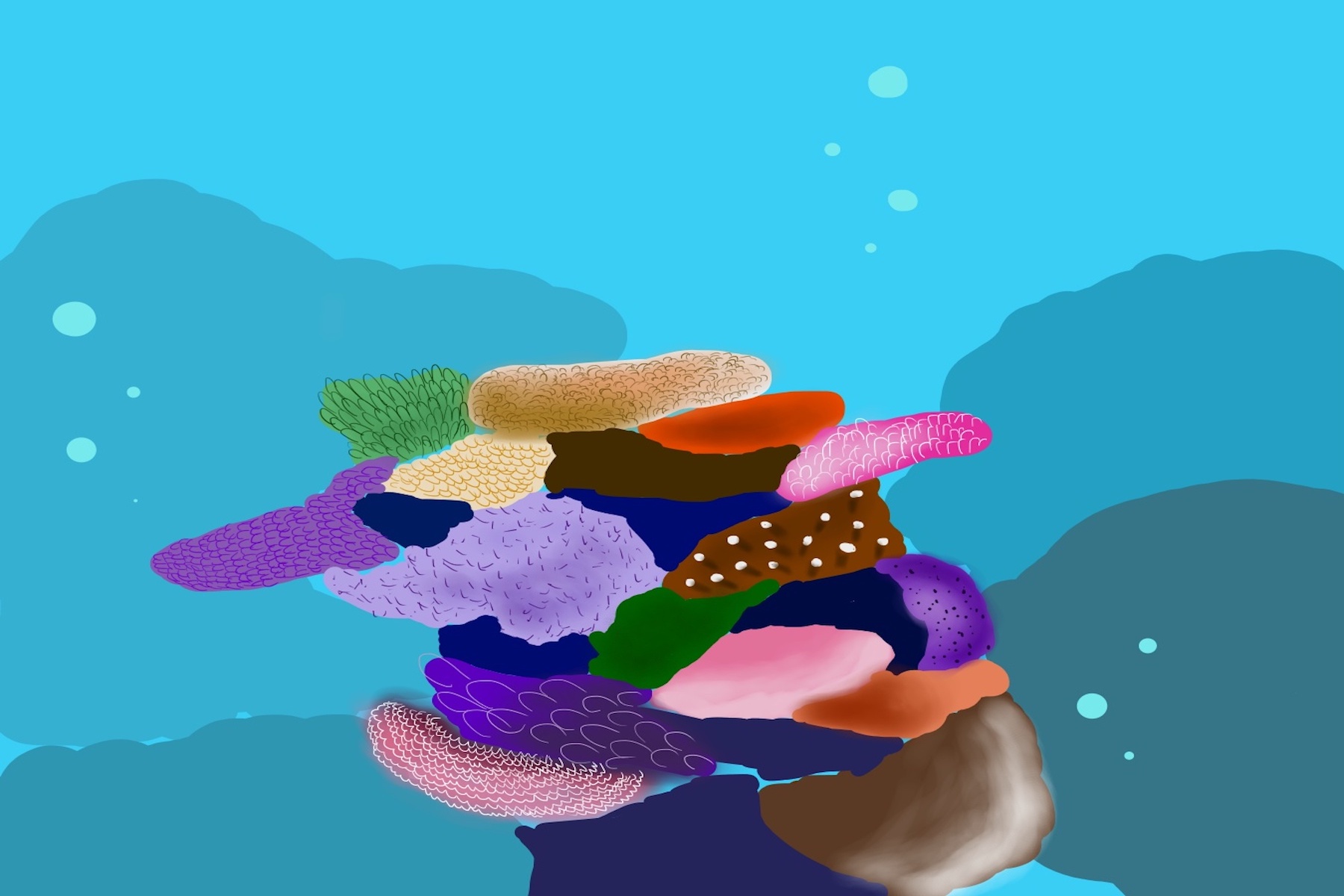Most sunbathers know the drill from the United States Food and Drug Administration, the federal agency responsible for testing sunscreens for consumer safety. However, while the sunscreen we apply “liberally to all uncovered skin” protects our own bodies, it washes off in the water, damaging coral reefs and sea life. As a result of extensive new research regarding the damage of ocean habitats, reef-safe sunscreen has begun to appear on the market.
Consumers usually think of sunscreen solely as a measure of protection for themselves against the sun. Because of all of sunscreen’s benefits, their potentially harmful aspects never cross consumers’ minds. The International Coral Reef Initiative conducted research about the impact of chemical sunscreen on reefs.
The three biggest effects are: bleaching of the coral, which is more pronounced in higher water temperatures, damage and deformation of coral larvae and damage to coral DNA and their reproductive success. This means that, not only is coral dying, but it’s also losing its ability to reproduce.
In the last few years, reef decay has received widespread attention due to the mass bleaching catastrophe of the Great Barrier Reef in Australia in 2016 and 2017. Experts believe that half of the Great Barrier Reef has been bleached to death since 2016 — 30% in 2016 and 20% in 2017 — and the health of the reef has continued declining since.
Am I suggesting that sunscreen residue is solely responsible for the decline of coral reef? Absolutely not. There’s no single cause for such a drastic decay, but rather a lethal cocktail of air and water pollution, climate change and chemical residue. It will take equal effort from lawmakers, corporations and individuals to combat the damage and maintain the beauty of the reefs for future generations. However, for right now, substituting chemical-based sun protection with reef-safe alternatives is one way we can protect ourselves and the reefs.
Whether you’re riding on a wakeboard or relaxing on the beach, here are five alternatives to chemical-based sunscreen.
1. Sun Bum
Sun Bum prides itself on providing vegan, gluten-free, cruelty-free, reef-friendly, paraben and sulfate-free sun protection products to its customers.
It’s also one of the most affordable brands of reef-safe sun protection, with the average bottle costing $10-$15.
2. Badger Clear Zinc sunscreen cream
Biodegradable sunscreen is a big yay for the ocean’s reefs.
The uncoated, clear, zinc oxide in Badger’s cream acts like a “non-nanoparticle.” Non-nanoparticles are larger than 100 nanometers, which means they stay on the surface of your skin because they are too large to be absorbed. Nanoparticles, which are the key ingredients in chemical sun protection, are smaller than 100 nanometers and can thus be absorbed by the skin and even enter the bloodstream.
Basically, nanoparticles are harmful for your body and the reefs, while non-nanoparticles protect both. It’s a win-win.
3. Blue Lizard Sunscreen
Made in Australia, this mineral-based sunscreen was made with reef safety in mind. A mineral-based sunscreen uses zinc oxide and/or titanium dioxide, both of which are non-nanoparticles, to create a ultraviolet light barrier on your skin without absorbing the UV rays.
In addition to being reef safe and mineral-based, Blue Lizard Sunscreen includes an unexpected feature in its packaging: smart bottle and smart cap technology. The bottle and tube cap change colors when exposed to UV light. Yep, you read that right. All bottles and caps turn from white to clear to blue with increasing amounts of UV light, except the baby bottle and tube cap, which turn pink.
This product helps consumers be aware of the severity of UV light around them and be knowledgeable of when they should reapply sunscreen.
4. Thinksport
Thinksport is another biodegradable, mineral-based, reef-safe sunscreen with a mission to protect sea life while doing its sun-screening duties.
And if that’s not enough, you can splash in the water worry-free, knowing that Thinksport is made with non-nanoparticle zinc, the safest choice ingredient in the US for sea life.
5. AllGood SPF 50+ Sport Sunscreen Butter Stick
AllGood sunscreen is coconut oil-based, which locks in moisture against drying saltwater. It is water resistant up to 80 minutes and is biodegradable. And the magic mineral ingredient? Non-nanoparticle zinc.
As you travel this summer, keep in mind that some vacation destinations have started banning the use and sale of chemical sunscreen. USA Today published a list of vacation destinations who have already taken legal measures in banning the sale of non-biodegradable sunscreen.
Hawaii recently passed a bill banning the sale of sunscreen containing oxybenzone and octinoxate, the two most harmful chemicals found in every chemical sunscreen, starting in 2021. Key West, Florida, enacted similar legislation, banning the sale of all non-biodegradable sunscreen by 2021. No store will be allowed to sell sunscreen with reef-damaging chemicals. In the Caribbean, the island of Bonaire voted unanimously to ban non-biodegradable sunscreens by 2021 as well.
Finally, Palau, an archipelago country in the Pacific, is set to become the first country to enact a nationwide sunscreen ban, with a fine up to $1,000 for businesses who continue selling non-biodegradable sunscreen. The ban is set to take effect in 2020.
Even if reef-safe sunscreens are not legally required, many tropical vacation destinations ask their guests to use reef-safe, mineral-based sunscreens, especially for snorkeling.
So, if you’ve made it to the end of this article and are adding an Amazon tab to search for reef-safe sunscreen, here’s a crash course:
Look for mineral-based sunscreen with zinc oxide, titanium dioxide or any other non-nanoparticle minerals. Avoid oxybenzone and octinoxate, the two key ingredients in chemical sunscreen.
By remembering these ingredients, we can do our part to save the ecosystems of the sea.
















